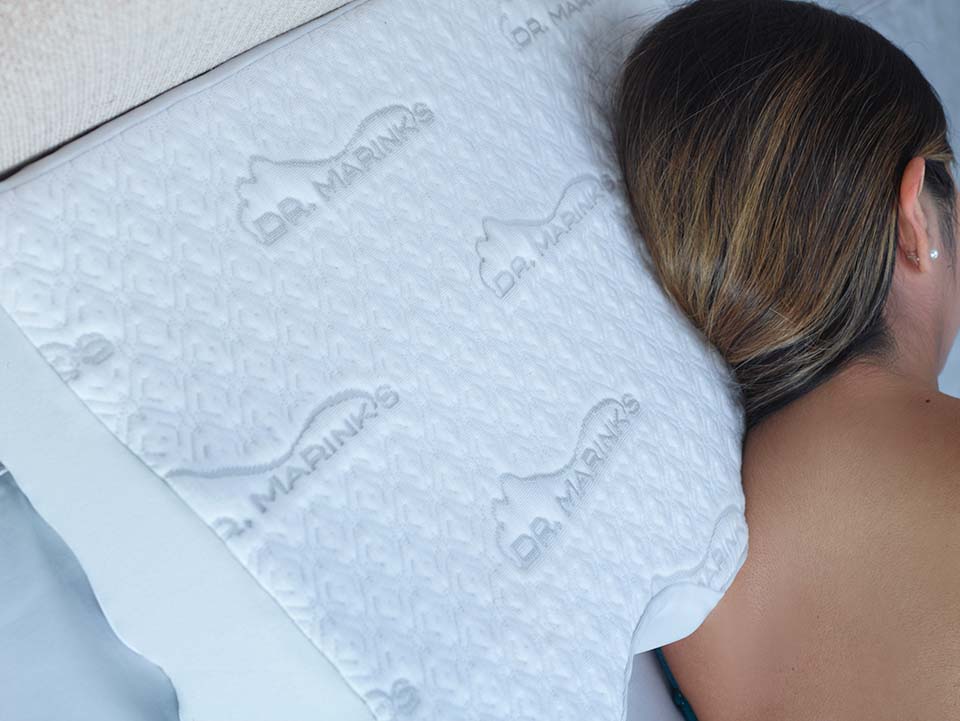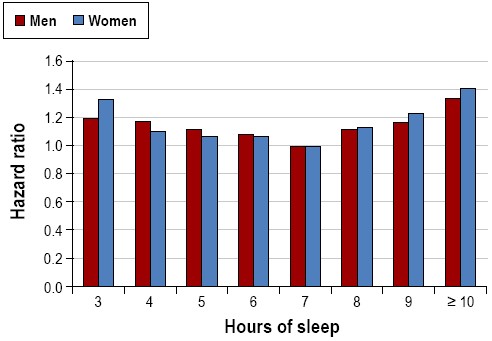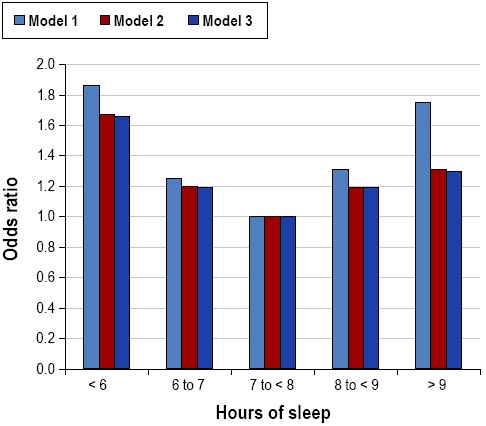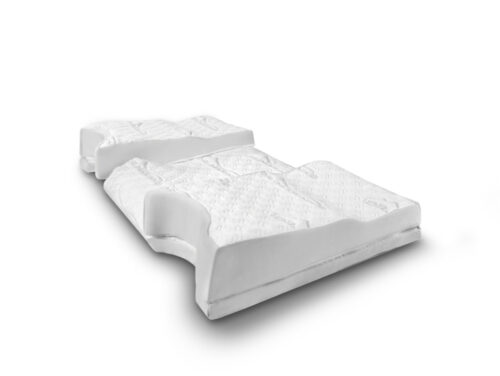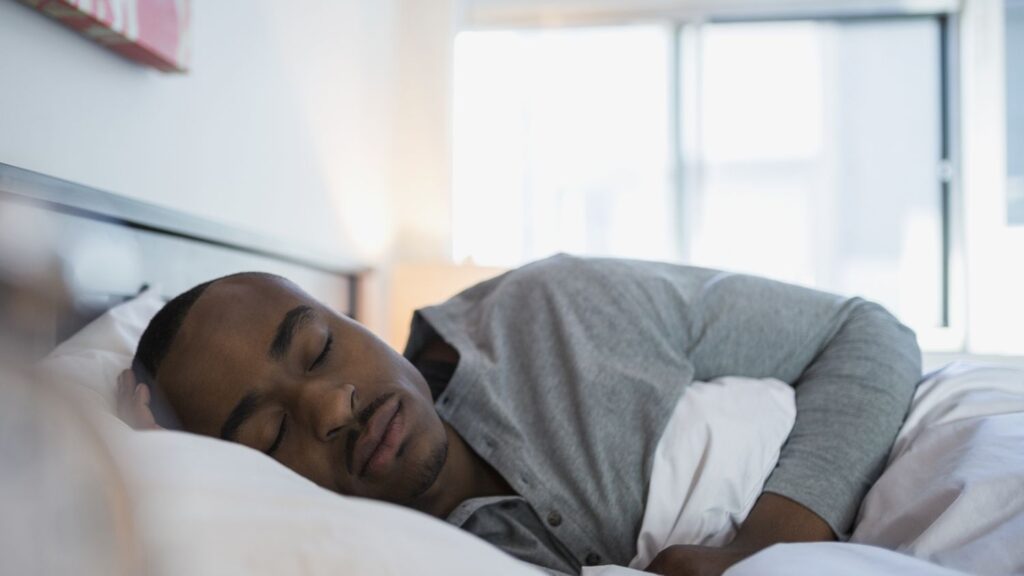Night after night sleep is remarkably consistent in its organization. Each night is comprised of recurring, complex, active physiologic processes, confirming that sleep is not a biologically inactive time interspersed between periods of wakefulness. Human sleep (and that of most mammals and birds) is composed of two distinct states: non-rapid eye movement (NREM) and rapid eye movement (REM), each with unique characteristics and each actively regulated by distinct neural centers. A typical night involves 4 to 6 repeated cycles of NREM and REM, each lasting approximately 90 to 110 minutes. NREM sleep is divided into 3 stages (N1, N2, N3) characterized by progressively more synchronous cortical neuron activity, stable autonomic function, and increasing arousal thresholds. In contrast, the electroencephalogram (EEG) during REM sleep shows low-voltage, mixed-frequency brain wave activity, more similar to the EEG of relaxed wakefulness than the more synchronous NREM EEG. Periodic bursts of rapid eye movements (hence the name REM), variable autonomic activity, and atonia of skeletal muscles are other features of REM sleep. “Deep” sleep (N3) is considered to be “restorative” in that it is associated with marked reductions in sympathetic activity resulting in decreased heart rate and blood pressure and stable breathing. Low amounts of N3 are associated with increased cardiovascular disease risk8. The evolution of two distinct physiologic states within the behavior of sleep seems extraordinarily unlikely unless critical biological needs are met by each state.
A fundamental homeostatic process is involved in the regulation of sleep. The strength of this process is dependent upon the amount of time elapsed since the last sleep period. The homeostatic pressure to sleep increases as a person stays awake. The longer one stays awake, the stronger the homeostatic drive to sleep becomes. Individuals with sleep deficiency due to short sleep duration accumulate a sleep debt and will exhibit an increased drive to recover the lost sleep leading to shorter sleep latency, greater total sleep time, and enhancement of EEG synchrony in NREM sleep9. During periods of prolonged sleep deprivation, the brain will overwhelm attempts to maintain wakefulness, and sleep will inevitably occur. Even when an individual is active and resisting sleep, if sleep debt is substantial, transitions into brief periods of sleep will occur. These “microsleeps” generally last from 3 to 30 seconds and occur without awareness of the individual, despite clear changes to a sleeping pattern in the EEG10,11. This homeostatic pressure for sleep which can result in the occurrence of sleep even when life is at risk (e.g., when driving), supporting the fact that sleep is indispensable.
In addition to the homeostatic sleep drive, a second process is involved in the control of the timing and organization of sleep. Referred to as the circadian (i.e., “about a day”) process, the timing of sleep is heavily influenced by a circadian timing mechanism located in the suprachiasmatic nucleus in the brain. The circadian timing system incorporates 3 different components: (1) input pathways that transmit light and other signals to the circadian “clock” and thus entrain circadian rhythms to environmental cues, primarily the light-dark cycle; (2) an endogenous circadian pacemaker that generates rhythms having a period of approximately 24 hours; and (3) output pathways controlled by the pacemaker12. In the absence of environmental cues, circadian rhythms are intrinsic and will continue to oscillate with a period of approximately 24 hours. A temporally precise interaction exists between the sleep homeostatic process and the circadian timing of output from wake-promoting centers in the brain. The gradual build-up of sleep debt across the day is opposed by incrementally increasing brain alerting signals, which rather abruptly dissipate around the usual time of sleep onset at night and “permits” sleep to occur. Without the opposition of the alerting system, humans would be unable to sustain wakefulness for the usual 16 hours each day because of the growing homeostatic sleep pressure. Without the prompt dissipation of alerting activity, sleep at night would be difficult to achieve and sustain. The evolution of two temporally and precisely complimentary processes which maximize daily sustained periods of both wakefulness and sleep lends credence to the essential biological need for sleep.
The circadian timing system is also responsible for the daily variations in many physiologic variables, such as core body temperature and the hormones melatonin and cortisol, and properly aligns those rhythms with sleep and with other physiological processes. For example, core body temperature peaks in the late afternoon or evening hours, and reaches its nadir in the latter part of the night. The declining temperature before and during sleep promotes sleep onset and duration. In contrast, levels of melatonin, secreted by the pineal gland, are low during the daytime and rise during the night helping to promote sleep.
The stress hormone cortisol has peak levels in the late morning and reaches a nadir during the night.
Sleep and wake rhythms can be misaligned with daily variations in the physiologic variables noted above through jet lag or shift work. Such misalignment manifesting from altered lighting conditions can also affect circadian oscillations in a host of mammalian peripheral tissues, including the heart, lung, esophagus, and spleen13,14. For example, even a single 6-hour phase-advance in the light-dark cycle, which would mimic travel from the US to Europe, desynchronizes circadian oscillations in peripheral tissues that, in turn, resynchronize at different rates. Over time, whole-body desynchronization may accelerate and lead to metabolic and cardiovascular disease15,16, cancer progression17, and death15,18.
